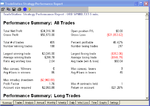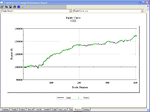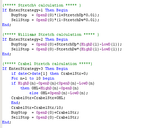tradingdde
Junior member
- Messages
- 13
- Likes
- 1
Please give a look to this strategy based on a mix among Larry Williams, Toby Crabel and Linda Bradford studies.
_______________________
Basic rules for futures 5 min charts:
Enter rules
- Wait for a daily compression (ex NR1, IdNR4)
- Wait for an Opening Range Breakout (intraday price goes over(under) the Day Open+(-) a percentage)
- Enter on the retracement on a 9 period moving average
Exit on daily close
Protective Stop %
Trailing Stop based on 100 Mov Avg
Attached you find TradeStation backtest on the Italian future in the last 9 years 5min data.
Is anyone studying similar strategies on other futures; Does anyone want to share experiences on these subjects?
_______________________
Basic rules for futures 5 min charts:
Enter rules
- Wait for a daily compression (ex NR1, IdNR4)
- Wait for an Opening Range Breakout (intraday price goes over(under) the Day Open+(-) a percentage)
- Enter on the retracement on a 9 period moving average
Exit on daily close
Protective Stop %
Trailing Stop based on 100 Mov Avg
Attached you find TradeStation backtest on the Italian future in the last 9 years 5min data.
Is anyone studying similar strategies on other futures; Does anyone want to share experiences on these subjects?




